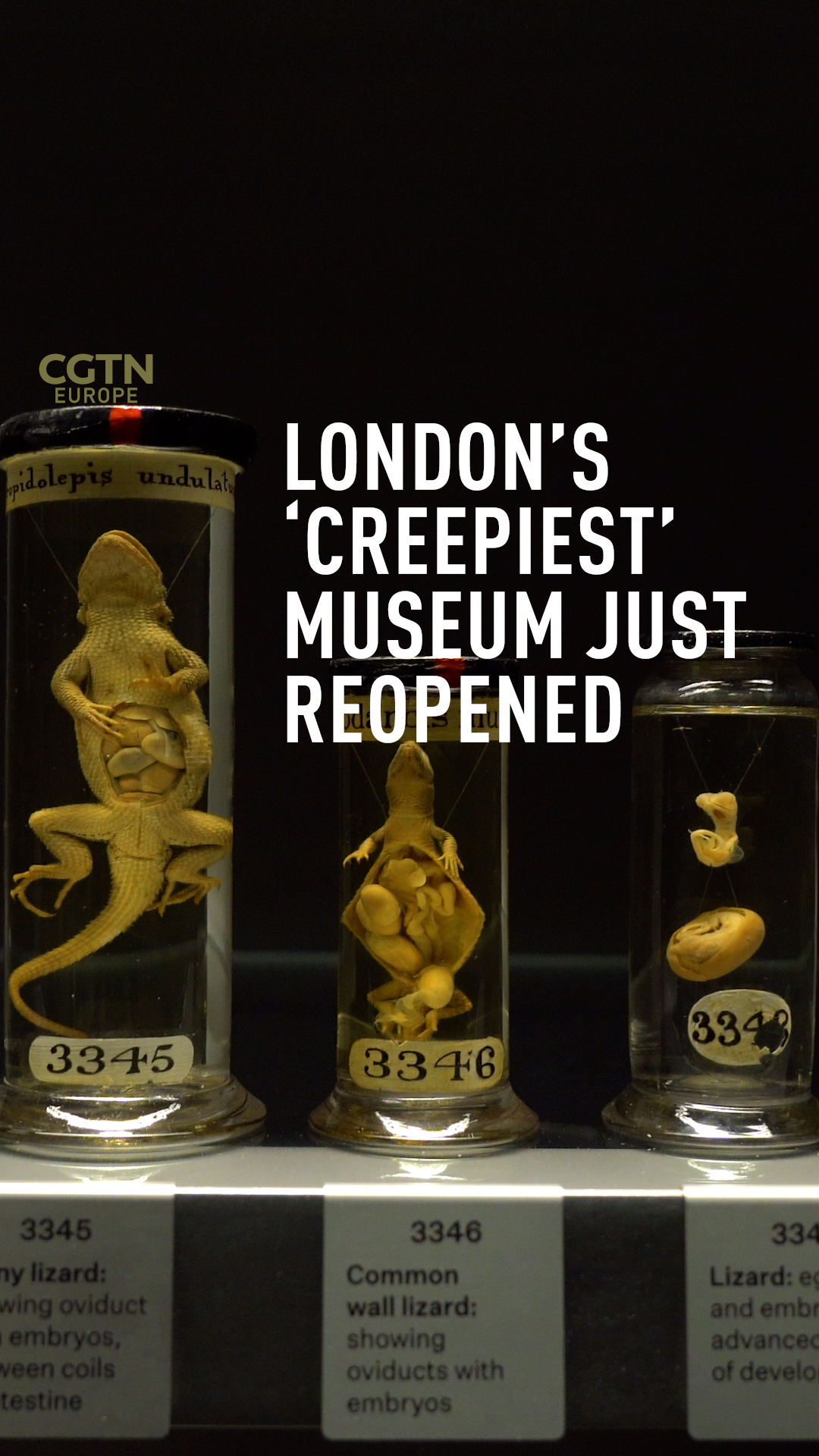00:59

It's been called London's creepiest museum and it's not for the fainthearted. A collection of thousands of animal and human specimens belonging to an 18th century anatomist has reopened, after six years of renovations.
Visitors speak in whispers, reflecting a hush of quiet reverence at the Hunterian Museum, which is part of the Royal College of Surgeons of England.
Human body parts, including syphilitic skulls, a giant foot showing signs of elephantiasis and human fetuses at various states of gestation are all on display. They form part of a collection amassed by the pioneering 18th century anatomist and surgeon, John Hunter.

GALLERY: Hunter's collection helped lay the groundwork for modern medicine.
GALLERY: Hunter's collection helped lay the groundwork for modern medicine.

Museum hopes to explore solutions to environmental problems.
Museum hopes to explore solutions to environmental problems.

18th century human and animal specimens on display.
18th century human and animal specimens on display.
As museums around the world come to terms with their colonial pasts, the Hunterian Museum is open about its own ethical questions.
It's asking visitors not to take photos of the human remains. Many would have been the products of grave robbers who supplied the bodies they dug up to medical schools.
"There are extremely sensitive and sad stories behind many of the things you'll see, so we want people to still respect that," said Dawn Kemp, Director of Museums and Archives at the Royal College of Surgeons of England, who has overseen the reopening of the Hunterian Museum.
She told CGTN Europe: "These are human remains and we want as many people as possible to see and experience the museum but not to exploit it. Of course no one would condone taking bodies from graves, or whatever, but we have been the beneficiaries of that."
READ MORE
Corfu museum draws crowds to Asian collection
Interactive exhibition brings China's Song Dynasty to life
UK architect Norman Foster links cars to art
Gruesome but inspiring
While some may find the exhibit rather gruesome, the work carried out by John Hunter and his colleagues laid the groundwork for modern medicine. Visiting from the U.S., Katie Tackett was taken aback by the exhibit. "The fetuses were really disturbing," she told CGTN Europe, "but also really crazy the different stages and, you know, reasons why they preserved it.”
A visit here is not for the meek, but the museum is hopeful people will be inspired by John Hunter's approach - what he called his "grand curiosity." Hunter said that as a boy he asked questions about things that nobody knew or cared anything about.
Kemp told CGTN Europe: "I think if we keep doing that then we might come up with some answers and actually be exploring solutions to the major, major problems facing the world, particularly in the environment and nature. John Hunter realized human beings are part of the natural world. They're not apart from it."

Subscribe to Storyboard: A weekly newsletter bringing you the best of CGTN every Friday